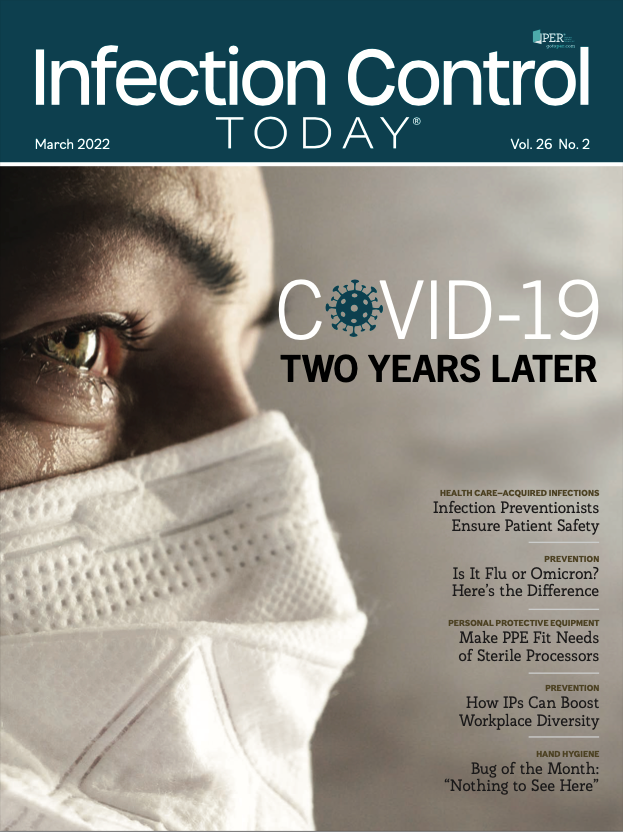Diversity Can Be Best Ally for Infection Preventionists
Perspectives from a diversity of health care workers improve the care and outcomes of patients.
(Adobe Stock)

Many health care organizations believe diversity is the strength of their institution. Organizations are engaged in addressing inequities, reducing disparities, and increasing opportunities for diversity, equity, and inclusion to strengthen their connection to the populations within their communities.
By law, organizations have policies relating to no tolerance of discrimination in race, religion, nationality, culture, age, sexual orientation and identity, or veteran status. Health care institutions realize that diversity of caregivers improves care of patient populations. Diversity is just 1 variable that contributes to positive patient outcomes. When there is an organizational priority for inclusion, then employees have a sense of belonging and thus will contribute to increased positive patient outcomes.
Respected, Valued
Having programs emphasizing inclusion that teach and support cultural competence to appropriately act in response to people of diverse backgrounds enhances the feeling of being respected and valued. As a reminder, inclusion is the act of affording everyone equal access to opportunities and resources. Acts to promote inclusiveness in institutions aim to make the workplace safe and respectful.
Diversity, equity, and inclusion (DEI) initiatives have been a recent focus for organizations to support all employees and patients. In health care, DEI will make a greater impact as it affects patient outcomes, quality, and safety. Likewise, students in higher education, who will soon be joining the workforce, have been taught to embrace and foster diversity and strive for equity and inclusion. They have been educated on social determinants of health and the importance of working for social and institutional changes. They are eager to make a difference and will soon become our colleagues. Will we be ready to support them and help them thrive?
Infection preventionists (IPs) need to increase equity by ensuring that health care workers have the materials needed to educate the communities served. Health equity means that every member of the community has an opportunity to experience positive health outcomes. IPs need to assist the community to remove obstacles to health. Social determinants of health such as poverty, lack of education and affordable housing, and violence in communities contribute to poor health outcomes. Many communities often lack resources to promote health. Patients deserve to have educational materials that effectively provide information on evidence-based practice to reduce the risk of poor outcomes. For IPs to improve health care outcomes, an understanding of how diversity relates to all stakeholders is needed. IPs need to review diversity information and relate that information to staff, patients, and other community members. There is a need to make sure councils and task forces are diverse.
Diversity in work groups can only increase the quality and safety because varied perspectives generally lead to better results. In Healthy People 2030,1 that goal was expanded even further: to achieve health equity, eliminate disparities, and improve the health of all groups. Designing educational materials that are culturally appropriate for diverse populations is imperative. Employing effective strategies to uncover unconscious bias so educational materials are free of stereotypical assumptions is a requisite.
Educational Materials
IPs need to create inclusive programs and services that benefit diverse and minority populations. Educational materials need to be designed to assist people with disabilities (physical, hearing, mental, social, emotional, and learning) as well as people belonging to the protective groups of race, religion, nationality, culture, age, sexual orientation and identity, or veteran status. Removing physical barriers and providing aids and services for those who need them will increase access to services.
Educational programs must also be considered for multigenerational learners. The generations include the traditionalist, the baby boomers, Gen X, millennials (Gen Y), and Gen Z.2 In general, each generation has increasing reliance on technology for learning so education will need to be provided in many formats in a variety of literacy levels. It is important to utilize different modalities to prepare educational materials, as not everyone has the same level of expertise using technology.When working with many generations, it’s important to be aware of implicit bias, a term that describes an unconscious process in which a person’s beliefs and attitudes affect his or her opinions, actions, views, and judgments.
Because of this lack of insight into bias, the individual is unaware of how their subconscious generalizations affect their decisions and behaviors when they are relating to others. The ways IPs can reduce implicit bias include focusing on seeing all people in their health education classes as individuals and reflecting on other points of view before educating groups or working with staff and populations. IPs can review course and educational materials for stereotypes and bias, such as gender, sexual orientation, and race.
Educational materials and programs need to include the social determinants of health. It is important to have policies that are patient-centered and emphasize patient rights and safety. Materials need to be written at an appropriate reading level. Many patients have difficulty with reading, writing, mathematical ability, and technology, which impedes access to and understanding of health care information.
Health education materials are recommended to be written at a fifth-grade reading level and should include pictures. Health education materials should include 1 idea per sentence. Readability is determined through various formulas that take variables such as sentence length, word familiarity, and syllables into account.
Keep It Simple
Health education presented in video and audio format will help people with visual or hearing disabilities but can also be used for individuals with low reading levels. Infographics are graphic pictures of information that tell a story and can be used to assist in communicating health education topics. Health education programs need to be affordable or free so all have access to the needed health information. Materials must be able to be translated in the native language of the patients served. When providing education to non–English-speaking patients, the appropriate use of certified competent interpreters is recommended to ensure that the patient is receiving appropriate linguistic services and the correct information is being accurately translated. Certified interpretation can be provided face to face in person, online, or via a telephone call. IPs should avoid using family members or friends to interpret.
The goals of Healthy People 2030 are to “attain healthy, thriving lives and well-being free of preventable disease, disability, injury, and premature death; eliminate health disparities, achieve health equity, and attain health literacy to improve the health and well-being of all; create social, physical, and economic environments that promote attaining the full potential for health and well-being for all; promote healthy development, healthy behaviors, and well-being across all life stages; and engage leadership, key constituents, and the public across multiple sectors to take action and design policies that improve the health and well-being of all.”3
Healthy People initiatives need to be considered when providing health education. The COVID-19 pandemic has demonstrated the need for effective communication and development of trust with constituents served. We know DEI is critical for our health care system and the whole of society. As IPs, let’s reflect on the preventive education we are providing and the infections we are treating, but, more importantly, on those we are treating.
We need our DEI initiatives from higher education, and the health care workforce, to transfer seamlessly over to the patient side and to the community as a whole. We aim for equal access to appropriate culturally and linguistic resources, infection prevention, timely care, and comparable treatment outcomes.
We empower you all to look at your institution and the local communities. Be empowered to investigate and ask questions. If we aren’t there yet with DEI and infection control, ask yourself what you can do. Talk to your patients and the stakeholders, and really listen; this will help spark change. Your future patients will thank you.

Newsletter
Stay prepared and protected with Infection Control Today's newsletter, delivering essential updates, best practices, and expert insights for infection preventionists.